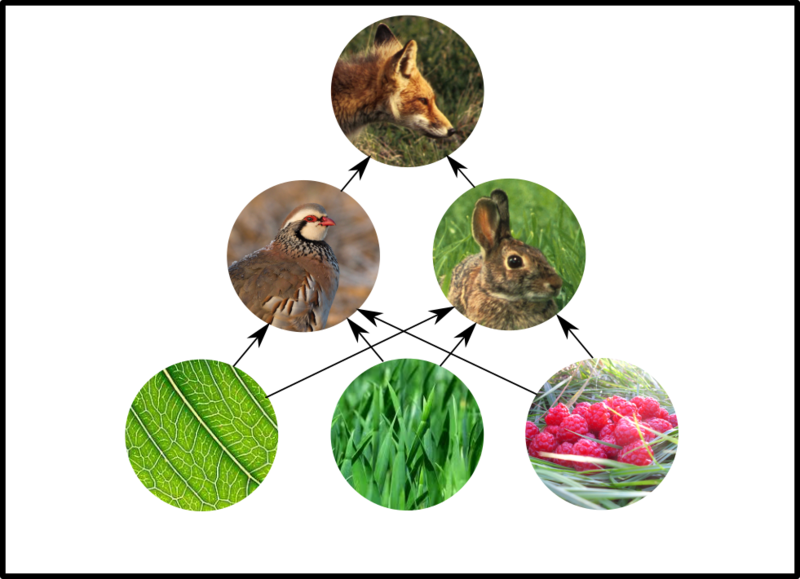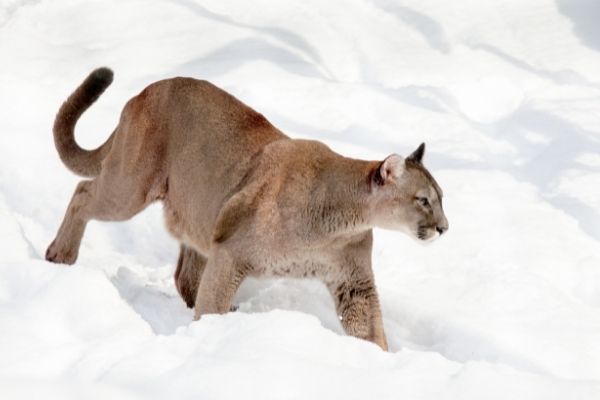Most people know foxes as vicious predators, but did you know that they also eat plants?
Foxes are among the most common and widespread mammals in cities. They are found on every continent except Antarctica, and their adaptability has allowed them to thrive in a wide range of habitats – from forests and grasslands to deserts and tundra – and of course, among humans in crowded cities!
While the exact composition of a fox’s diet varies depending on location and availability of food sources, all foxes are basically omnivores – meaning they consume both plant and animal matter.
As opportunistic feeders, foxes will eat just about anything they can find, including small mammals like mice and rabbits and insects but also fruits, vegetables, and even garbage. In areas where human settlement is dense, foxes often become accustomed to living near people and scavenging for food in our trash cans.
The fox is an important animal in the ecosystem for several reasons. First, as an omnivore, the fox plays a key role in controlling populations of smaller animals and insects. By eating these animals, the fox helps to keep their numbers in check and prevent them from damaging crops or spreading disease.
Second, the fox is an important source of food for other predators such as coyotes and hawks. By preying on smaller animals, the fox provides a valuable food source for these larger predators.
Finally, the fox is also a key player in the cycle of nutrients in an ecosystem. By eating plants and small animals, the fox helps to break down organic matter and release essential nutrients back into the soil.
This cycle of nutrient cycling is essential for maintaining healthy ecosystems.
Contents
What plants do foxes eat and why?
Few people know that grass, berries, acorns, tubers, and other fruits and vegetables also make up a small part of foxes diet in most cases; however, they will prefer to hunt down smaller animals for a protein-rich meal when available.
Some say that foxes became more omnivorous when they adapted to life in human cities!
Foxes eat plant material when they have a hard time catching animal prey and because it stimulates their digestion.

Sometimes they also simply eat roots and tubers because they are digging after animals like crayfish, worms, or rodents and randomly encounter an edible plant part.
Eating plants provide the foxes with some vitamins and fibers (due to their cell walls) that are otherwise hard to get from an entirely carnivorous diet.
Foxes are omnivores!
As a biologist with experience studying the feeding habits of various animals, including foxes, I can provide you with a comprehensive list of plants that foxes commonly consume and explain the reasons behind their dietary choices.
Foxes are omnivorous creatures, meaning they have a diverse diet that includes both plant and animal matter. While their reputation as cunning hunters often precedes them, foxes also rely on plants for sustenance, particularly in seasons when prey may be scarce or when they need to supplement their diet.

One of the primary plants that foxes consume is fruits. Foxes are known to eat a variety of fruits, including berries such as blackberries, raspberries, and blueberries. These fruits are rich in carbohydrates and provide an excellent source of energy for foxes, especially during periods of increased activity, such as breeding or raising young.
I vividly recall observing a red fox in the field, delicately plucking ripe blackberries from a thorny bush and savoring the sweet morsels, their vibrant color contrasting with its reddish fur.
In addition to fruits, foxes also consume seeds and nuts. They are opportunistic foragers and often scavenge in areas where trees or shrubs produce seeds or nuts. This behavior is particularly noticeable during autumn when trees shed their seeds and nuts as part of their reproductive cycle.
Foxes may cache these food items by burying them in the ground, forming a reserve for later consumption. I once stumbled upon a fox den that was adorned with a collection of hidden acorns, evidence of the fox’s resourcefulness and preparation for leaner times.
Vegetative matter also forms an essential part of a fox’s plant-based diet. They consume a variety of plant parts, including leaves, grasses, and even young shoots. These plant materials provide necessary vitamins and minerals, and they are often consumed in small quantities. During periods when prey is scarce or when foxes need to diversify their diet, they turn to these readily available plant sources. I remember observing a fox nibbling on fresh green grass, likely seeking to aid digestion or perhaps enjoying the taste and texture it provided.
Furthermore, foxes are known to consume carrion, which can include plant matter. When foxes scavenge on carcasses, they may inadvertently ingest parts of the animal’s stomach contents, which can include plant material that was being digested. While not a direct choice, the consumption of plant matter in this way can contribute to their overall plant-based diet.
It is important to note that the diet of a fox can vary depending on factors such as geographical location, habitat, and seasonal availability of food resources. Foxes are highly adaptable animals and can exploit a wide range of environments, from forests to urban areas. Their dietary flexibility allows them to survive in diverse habitats and adjust their plant consumption accordingly.
In summary, foxes consume a variety of plants for several reasons. Fruits provide them with a source of energy, seeds and nuts offer essential nutrients and can be cached for later consumption, vegetative matter contributes vitamins and minerals, and carrion can inadvertently include plant material.
This dietary flexibility is a key factor in the fox’s ability to adapt and thrive in different ecosystems. Having had the privilege to observe these fascinating creatures in their natural habitats, I have marveled at their resourcefulness and ability to exploit the abundance that plants have to offer.
What about wolves, coyotes, and dogs?
The fox is a medium sized animal that resembles dogs a bit. Foxes have evolved over time from smaller ancestors that ate small rodents and insects and these evolved to what we know as dogs, wolves, coyotes, and foxes today!
The fox is a member of the dog family, which includes wolves, coyotes and domestic dogs. Foxes are members of the genus Vulpes, which is one of two genera in the family.
The other genus is Canis, which includes wolves, coyotes, and domestic dogs.
Because these animals are all related, they do have similar dietary preferences, and all of them will occasionally eat plants!
The fox originated in North America about 12 million years ago. However, the foxes that live today are all descended from European and Siberian foxes that were introduced to North America by humans.
The adaptation of foxes to the presence of humans has also broadened their food preferences!
This is reflected in the current diet of foxes, which can include large numbers of small rodents or insects but also some amount of tubers, berries and nuts!
Foxes can hunt both during the day and at night. They have good vision and hearing. Both of them are acute senses of smell and of taste.
They live in social groups, usually of just one or two males, several females and their young. The foxes are territorial, using their acute senses of smell and hearing to defend this territory. They have a number of vocalizations, including barks and howls that resemble those of dogs and wolves a bit.
Foxes are monogamous, with both parents providing care for the young. Foxes have a den that they use for raising their young.
The den is usually a burrow, which the fox family shares with other foxes. The den has a number of entrances, so the fox family can escape if the den is invaded.
Is a Fox a Producer, Consumer, or Decomposer?
Foxes are consumers because they eat other living things. Foxes are omnivores, which means that they eat plants and animals.

Producers are plants and these are especially important in ecosystems because they provide resources and energy to other organisms. Not only for herbivores but also for carnivores as they feed the primary consumer animals eaten by carnivores.
What Type of Consumer is a Fox?
Foxes are omnivores, which means that they eat both plants and animals. Most animals are herbivores, which means that they eat only plants.
Foxes are omnivores, which means that they eat both plants and animals. Most animals are herbivores, which means that they eat only plants.
Can Foxes be Considered Decomposers?
No, foxes are not decomposers. Decomposers are organisms that break down dead organisms, like bacteria or fungi.
Foxes are not decomposers because, although they eat small animals, they don’t eat dead animals or decaying matter. Foxes are carnivores, so their main diet is other living animals.
What Role Do Foxes Play in the Food Chain?
Foxes are omnivores, which means that they eat both plants and animals. Most animals are herbivores, which means that they eat only plants. Foxes are omnivores, which means that they eat both plants and animals.
Most animals are herbivores and eat only plants or very few animals. This is because plants are more widely available and because it is more energy-efficient. Therefore the food chain can carry more herbivores than carnivores and omnivores.

Foxes are predators, so they feed mainly on other animals, but all animals cannot mainly eat other animals otherwise there would not be any animals left!
Foxes are important for the ecosystem because they help to control the population of small mammals, such as rodents and rabbits.
By keeping the population of these animals in check, foxes help to prevent overgrazing and the destruction of vegetation. This, in turn, helps to maintain a healthy balance in the ecosystem and prevents soil erosion.
In addition, foxes are scavengers and will eat carrion (dead animals). This helps to clean up the environment and prevents the spread of disease.
Are Foxes Autotrophs or Heterotrophs?
Foxes are heterotrophs because they eat other living organisms. Practically no animals are autotrophic because animals do not get their energy directly from the sun like plants do.
That is, animals like the foxes cannot make their own energy!
What Animals Hunt and Eat Foxes?
Although foxes may hunt and eat other animals, they are themselves hunted by other animals. Foxes are prey to larger predators including coyotes, cougars, bears, wolverines, leopards, bobcats, wolves, eagles, owls, larger foxes, and even humans!

Conclusion
In this blog post, I have looked into the diet of the fox as an animal that is rarely thought about as a plant-eater on a day-to-day basis!
However, foxes are indeed omnivores because they eat both animals and plants. Foxes eat berries and fruits, as well as small animals like rodents and insects.
Whereas foxes also eat grass and acorns, their main diet will always be animals like mice, rats, rabbits, insects, worms, and they will even eat crayfish!
As the wild habitats in which foxes live come under increasing threat, it is no surprise that these opportunistic animals have made their homes in our towns and cities.
Foxes have been good at adapting themselves, partly because they are not picky when it comes to food choices!
Foxes are not endangered and there is certainly room for foxes and humans to co-exist. You may welcome the occasional visit from a fox to your garden and if it’s doing no harm, there’s no reason why you shouldn’t enjoy observing them.




